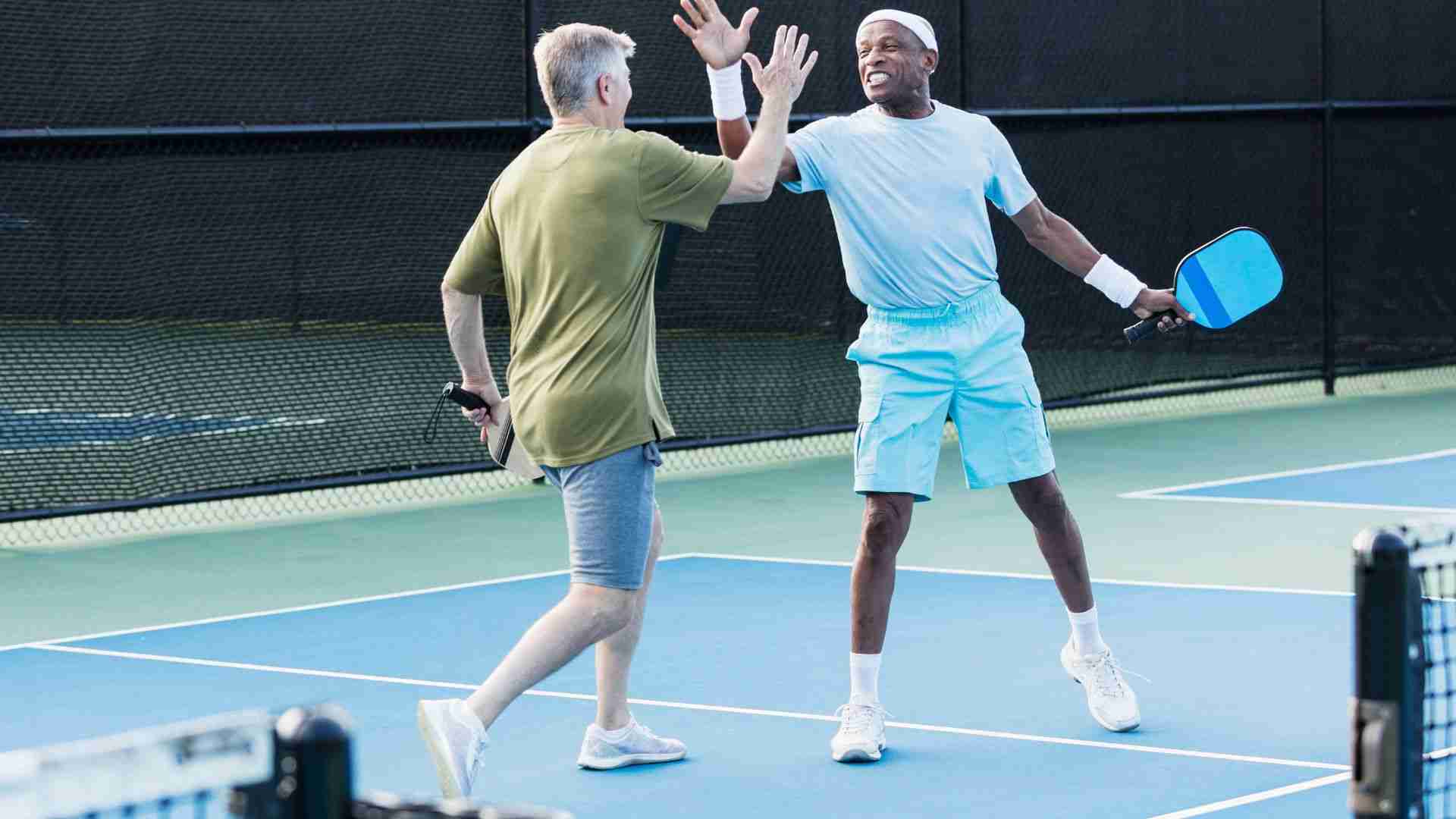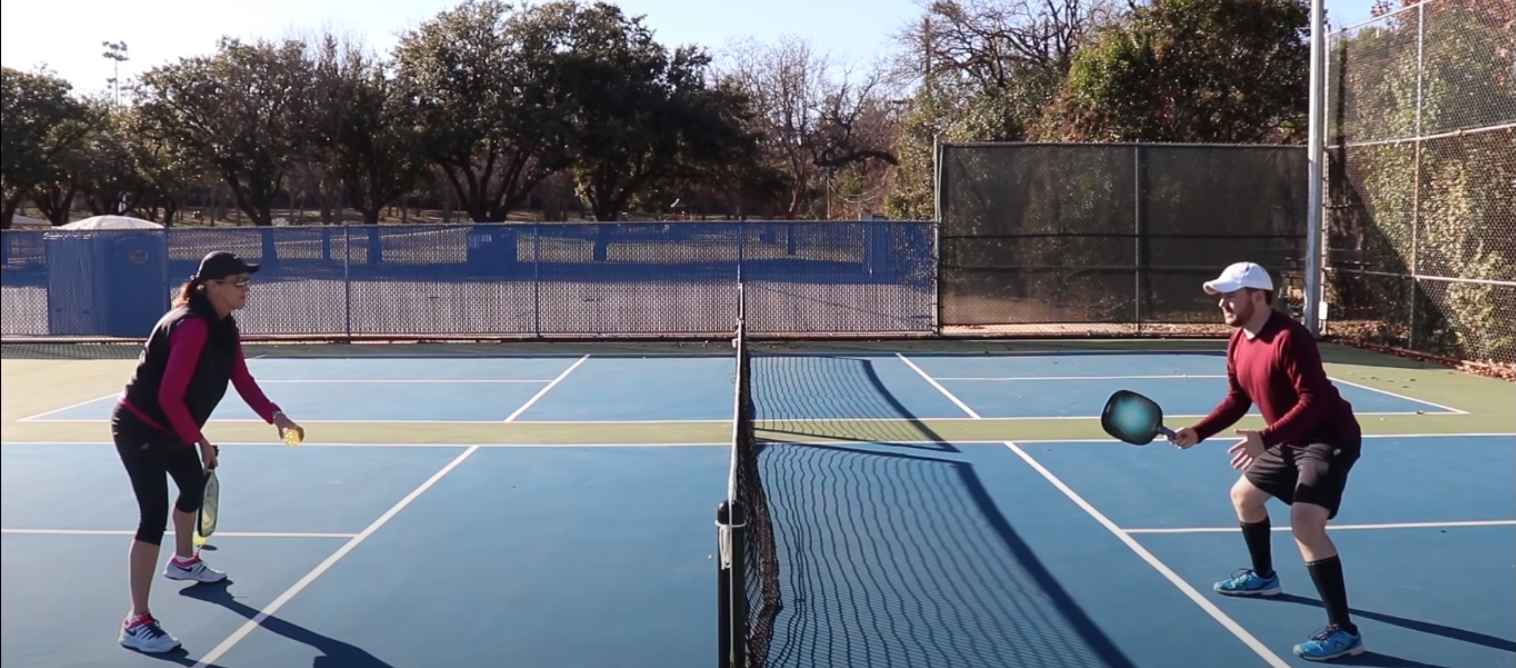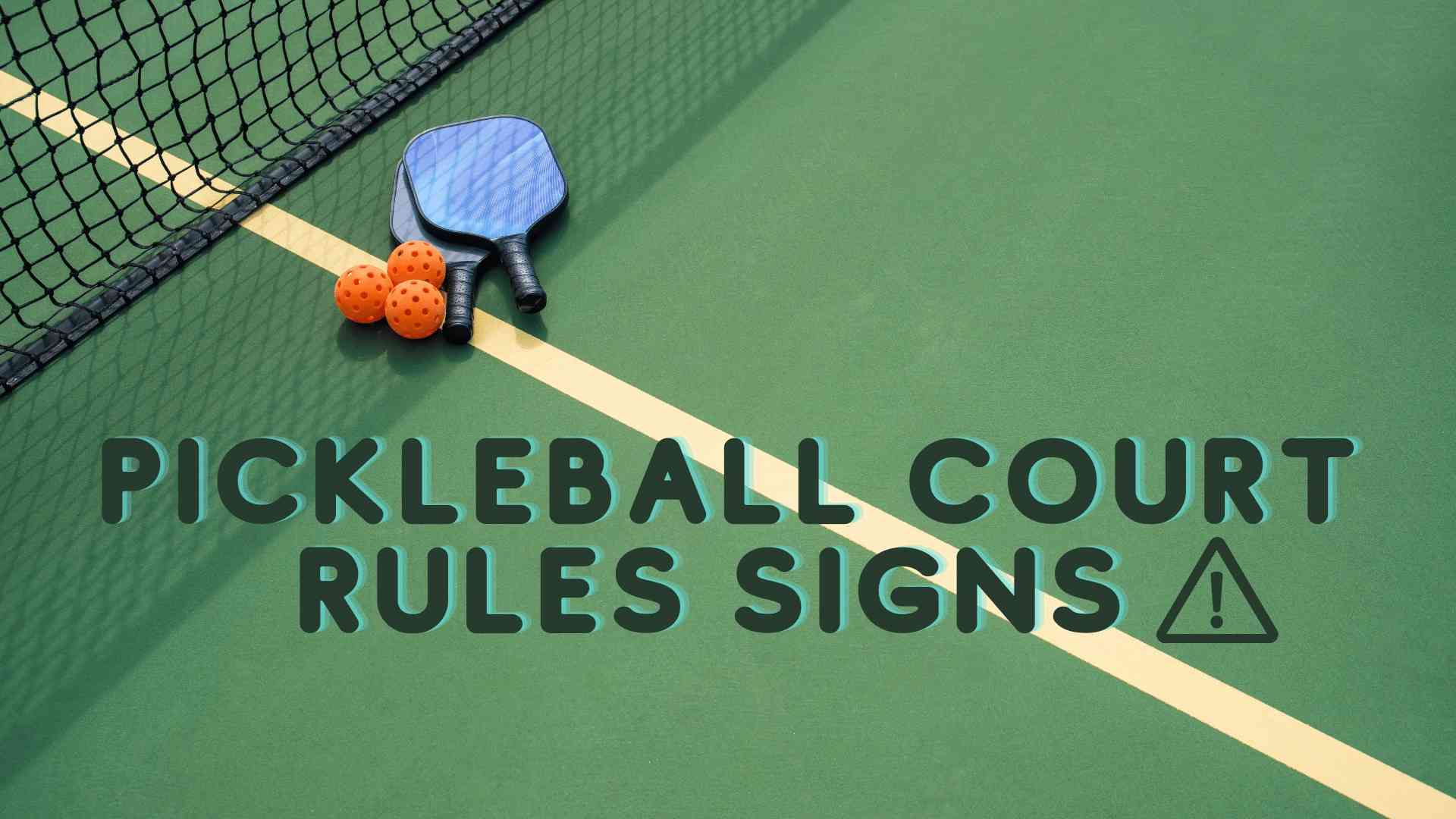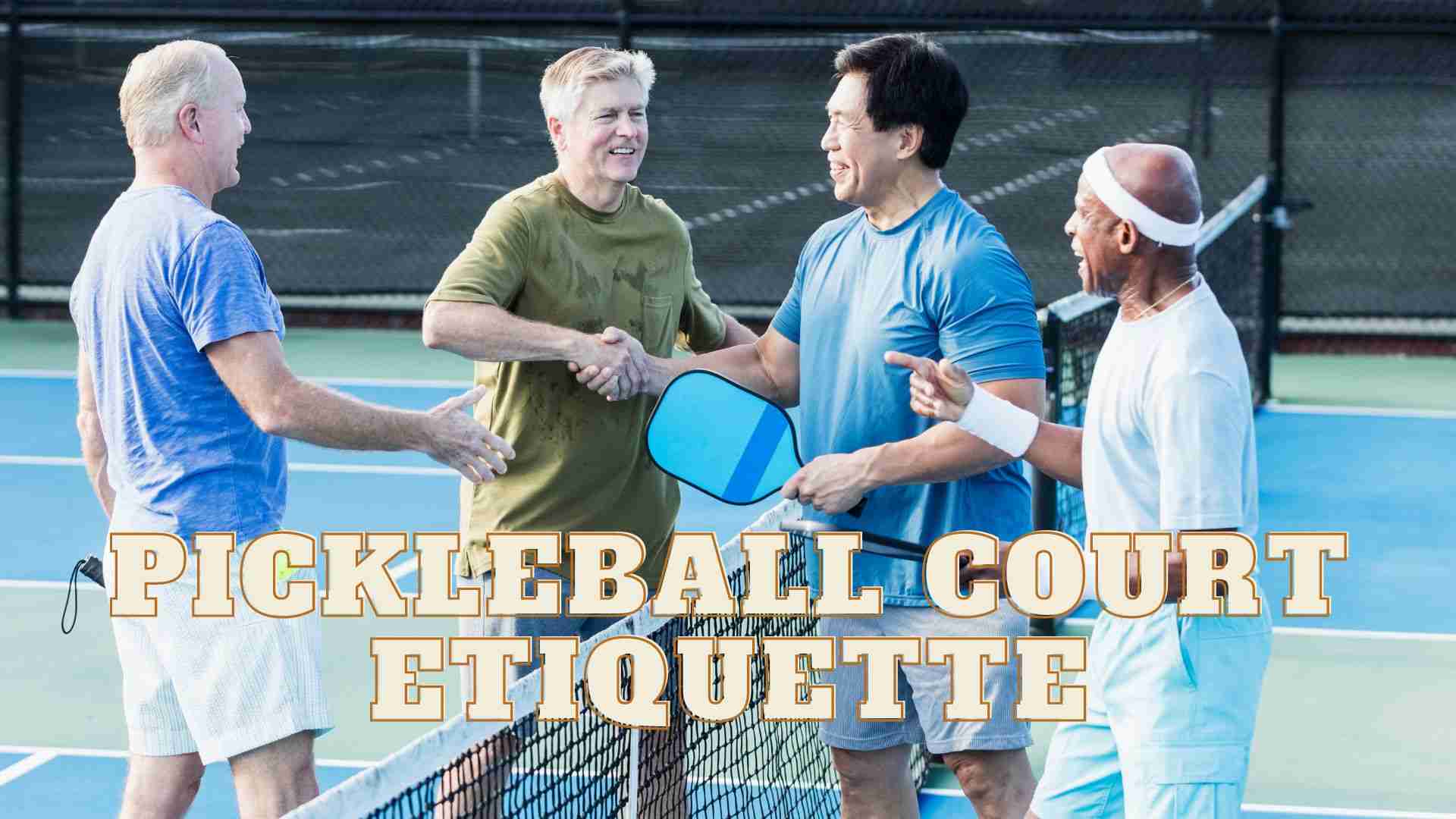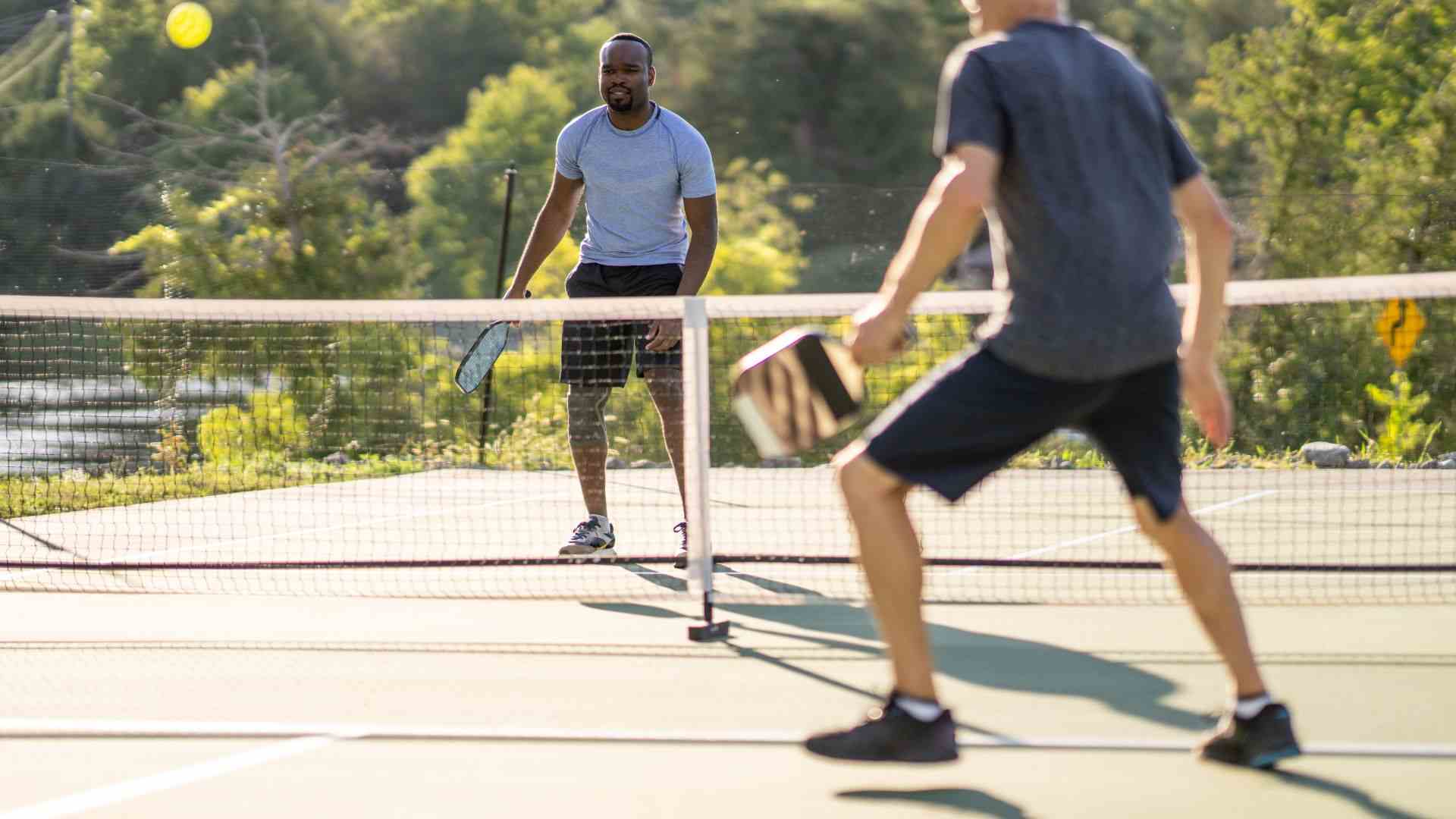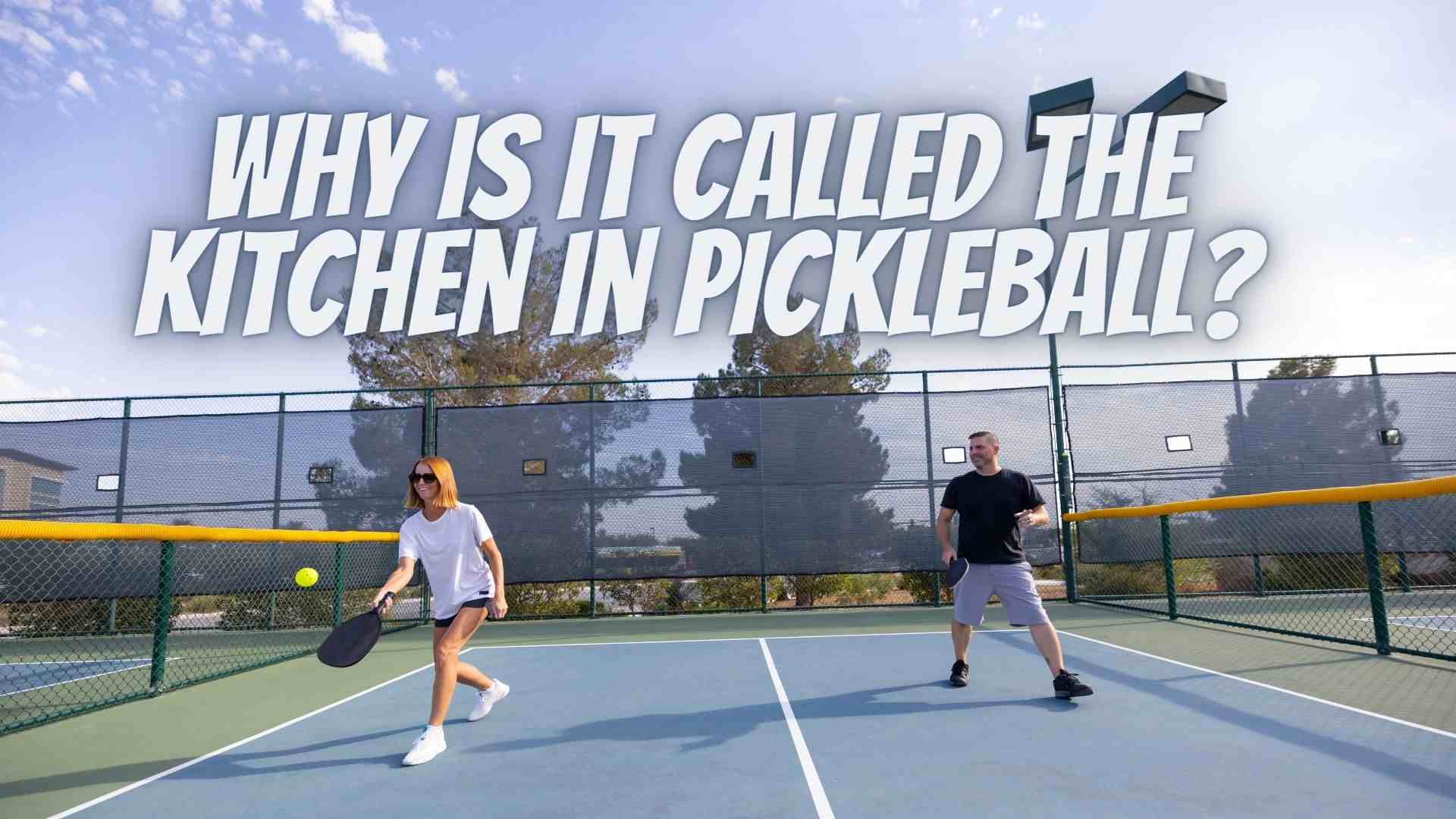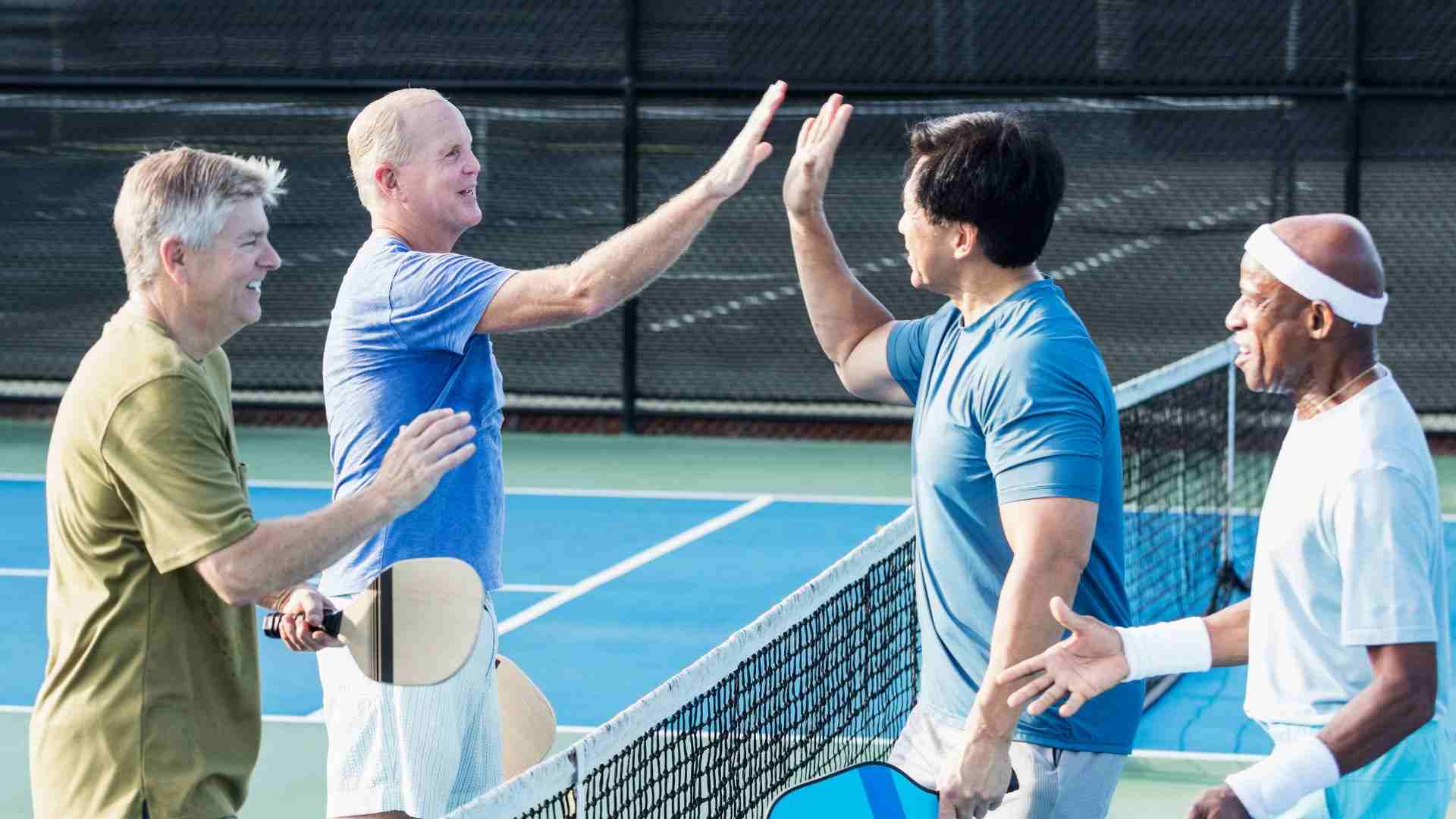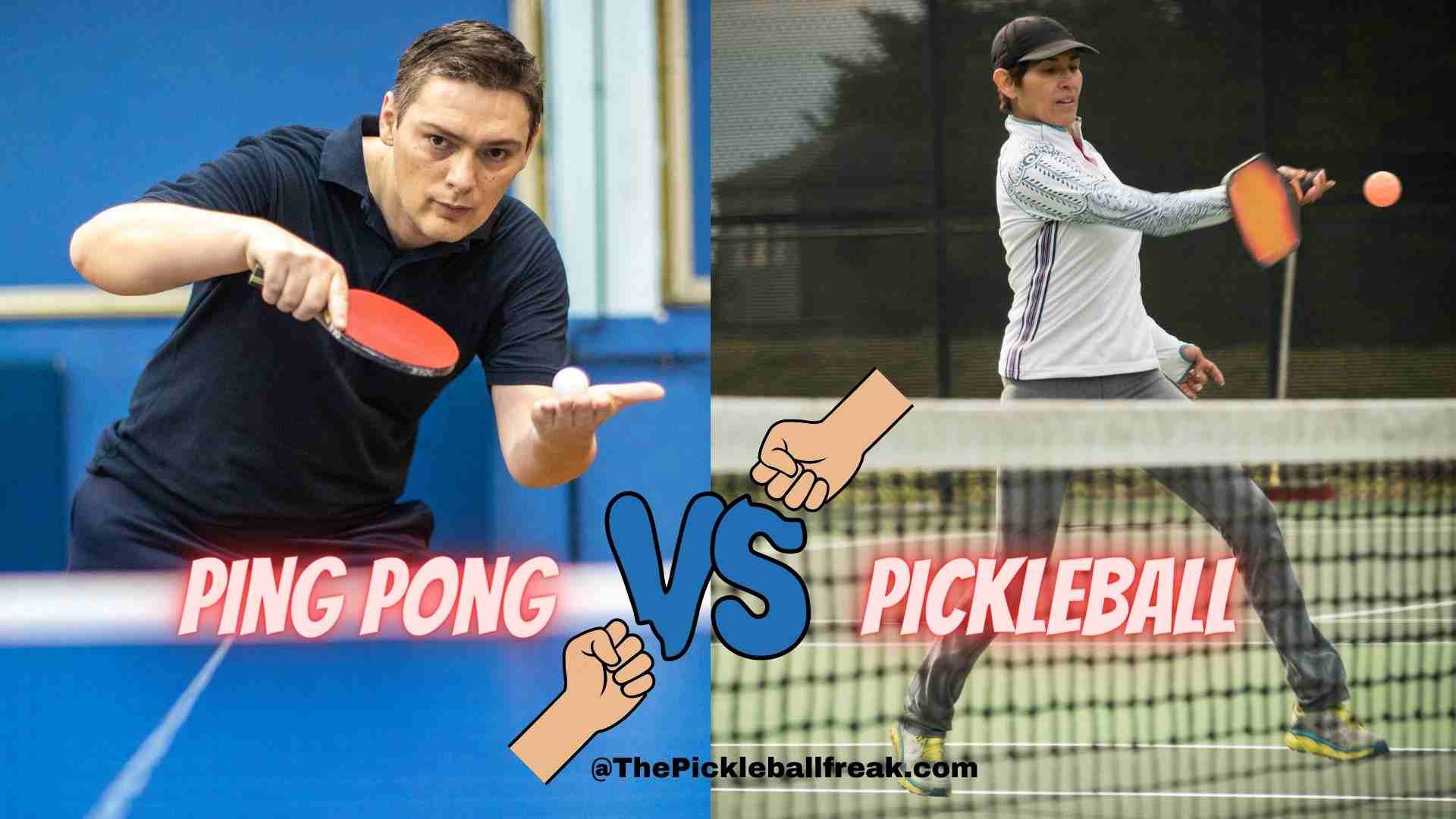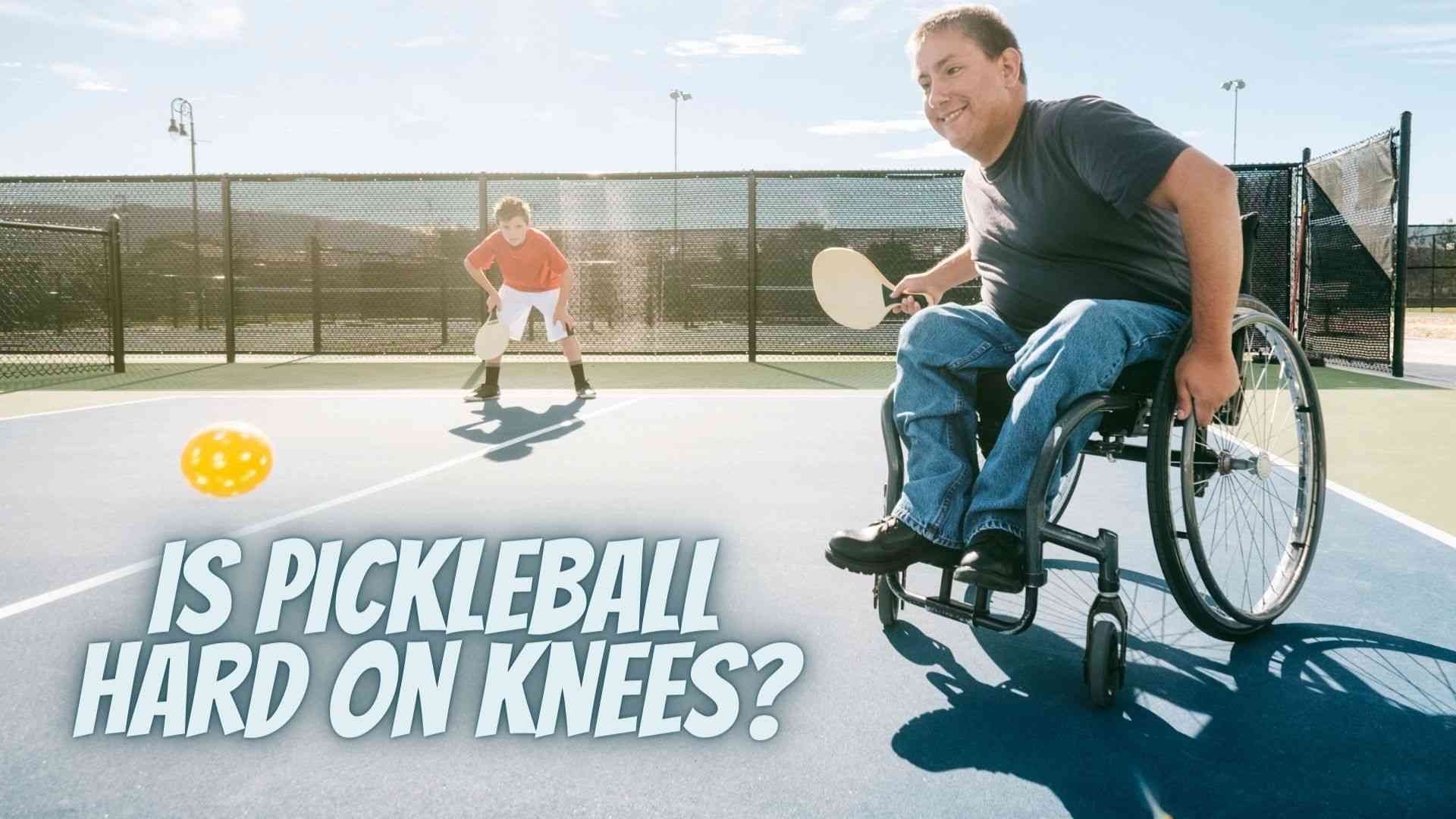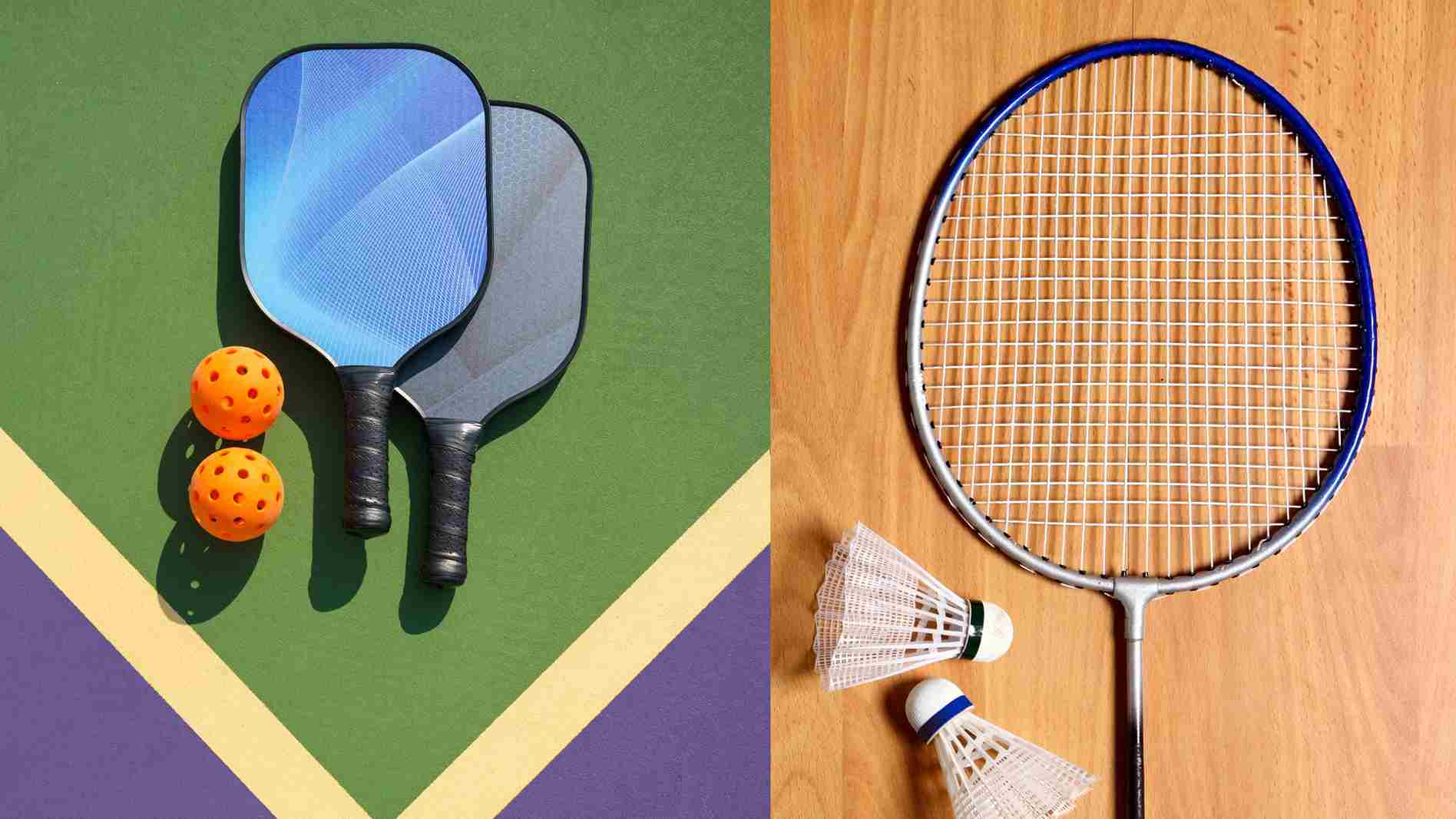
If you’re looking for a fun and challenging racket sport to play, you might be wondering which one to choose pickleball or badminton. While both games have similarities, there are also some significant differences that can help you make a decision. Let’s get into them.
Pickleball and badminton are both racket sports very similar to each other and are played on the same size court with just a few similar rules. Whereas the differences between Pickleball vs badminton are equipment, court, rules, and playing environment.
Badminton is an indoor game using rally scoring played with a racket and shuttlecock. Pickleball is played with a paddle and whifle ball both indoors and outdoors using a side-out scoring technique.
It is easy to fit both pickleball and badminton courts inside a tennis court due to their identical size. The game of badminton demands speed and responsiveness, while pickleball demands stability and the ability to serve backhands.
Badminton nets are waist-high, while pickleball nets are about knee-high. The nets for both sports are easily stored nearby to the courts since they are foldable.
Let’s take a closer look at Pickleball vs Badminton and the rules used to play these two games along with the history of both and how is badminton unlike other racquet sports and how pickleball sports similar to badminton.
Pickleball vs Badminton Differences
Pickleball and Badminton History
Pickleball was invented in the 1960s first in Washington state then the game quickly caught on popularity, and soon the official rules came with organizing tournaments.
Pickleball grew more in popularity after 2010 and today, it is played in over 5,000 locations across the United States and even in the world.
Despite not being included in the Olympic Rings, pickleball is played in three major professional leagues and is becoming popular internationally. Can we expect pickleball to make an Olympic appearance soon? Read Here.
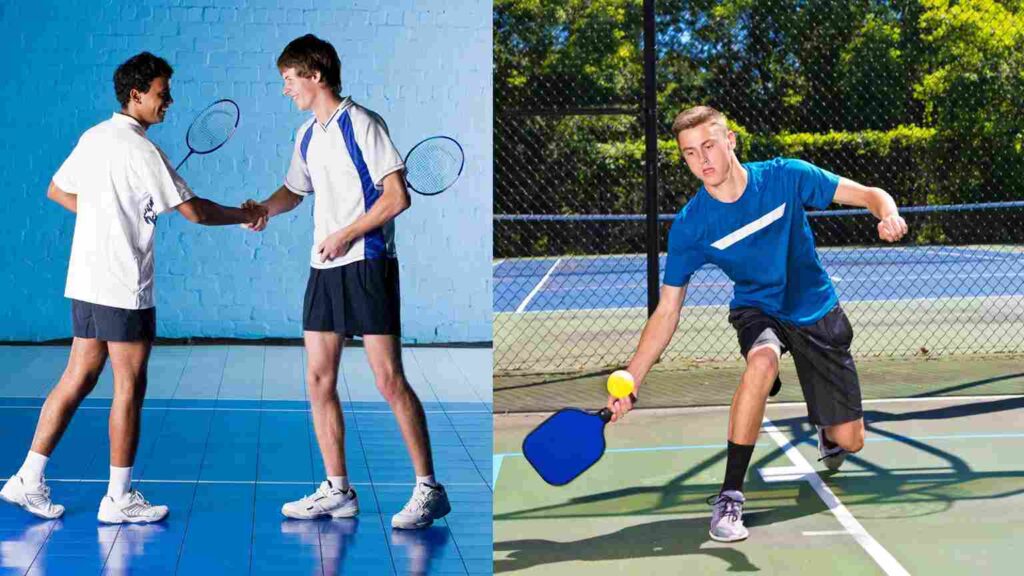
Badminton has a much longer history back in ancient civilizations in India and China, where a game similar to badminton was played using feathers and a net.
The modern version of badminton was developed in the 1800s in England, where it was played as a social game among the upper classes.
Badminton became an Olympic sport in 1992, and today, it is played in over 160 countries around the world. It is especially popular in Asia, where countries like China and Indonesia have produced some of the world’s best players.
Both ball pickleball and badminton were just started as recreational sports and both become beloved racket sports that are played by millions of people across the globe.
Transition From Badminton To Pickleball
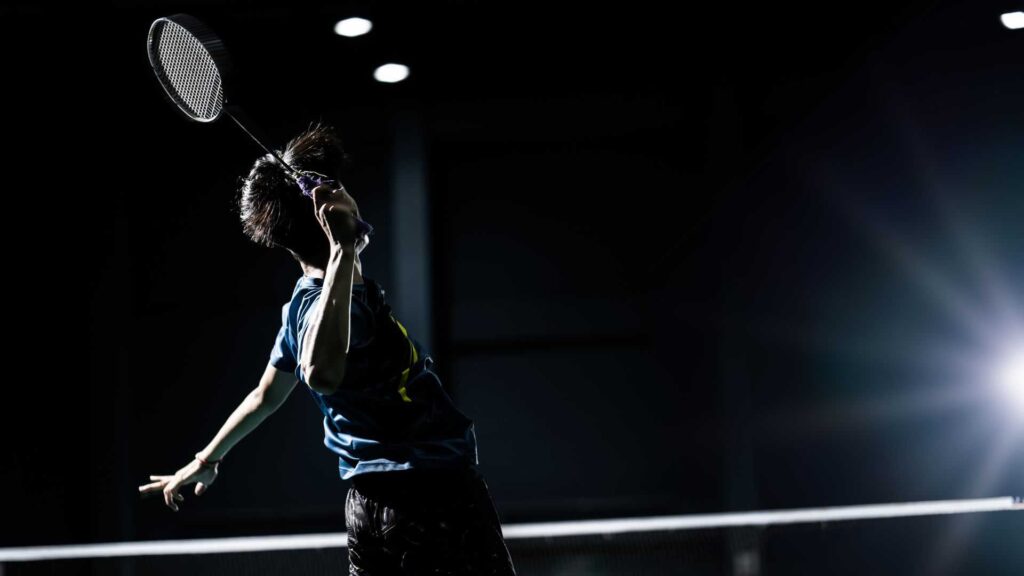
Transitioning from badminton to pickleball can be a natural progression if you’re looking for a new challenge or want to try something different.
When you start pickleball, you will have a leg up on your competition because you are experienced in playing badminton.
Pickleball is a fast-paced sport, so your speed and quick battles on badminton courts will transfer naturally to pickleball, as compared to badminton vs pickleball.
Badminton players will feel comfortable fighting at the kitchen line, returning blows, and always having their pickleball paddles ready for whatever shots their opponent throws at them.
There are several “Adjustments” you can experience when transitioning from badminton vs pickleball:
- Back Hand Shots: Putaway shots in pickleball involve a combination of shot selection and wrist movement. Badminton players have a natural wrist flick motion that they typically use for both forehands and backhands, so picking up pickleball is a very easy transition.
- The difference in pace: When transitioning to pickleball from another racquet sport, slowing down is often the hardest part. If you are coming from another sport, at times, you may have great success playing pickleball at speed, but when your toes are on the kitchen line and a well-placed dink comes out to play, that’s when things begin to become more challenging.
- The bounce: In badminton, remembering to bounce the ball is one of the biggest adjustments. Badminton is played in the air due to the shuttlecock’s shape which makes it unable to bounce consistently. It can be a struggle for you on the pickleball court if you are playing both on the ground and in the air, but give it time and let it bounce.
Pickleball is generally considered to be less physically demanding than badminton. The court is smaller, and the ball is lighter than a badminton shuttlecock.
This can make pickleball a more accessible option for players who are older or have physical limitations that make badminton more challenging.
Difference In Equipment
Paddle
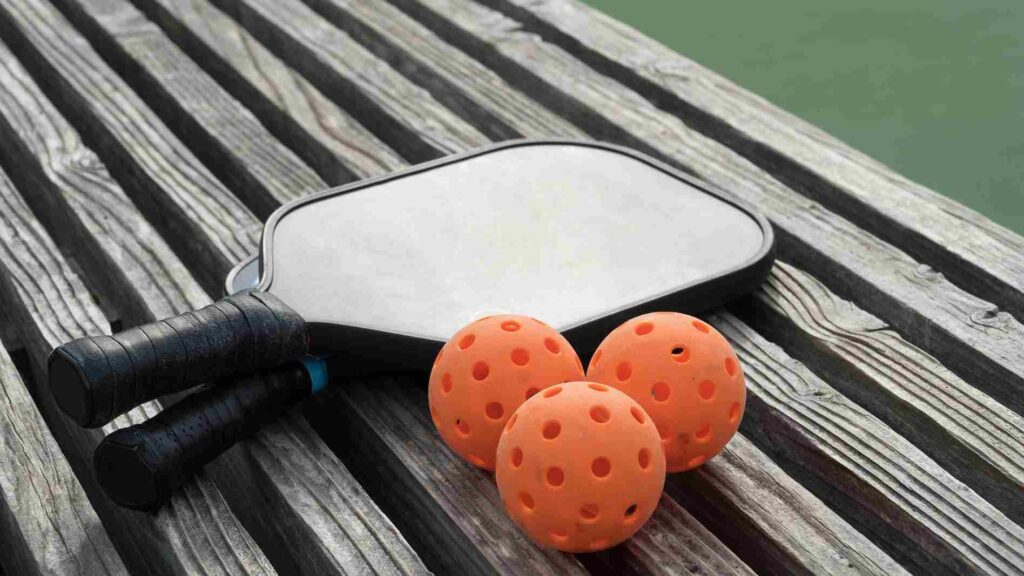
The biggest difference between the equipment used to play pickleball vs badminton is the paddle and racket. Pickleball players use a paddle that is made of lightweight materials such as graphite, fiberglass, or aluminum.
The paddle is typically between 15 and 16 inches long, and it has a rectangular shape with a rounded edge. The paddle has a grip similar to a tennis racket grip, and players use it to hit the plastic ball over the net.
Rackets
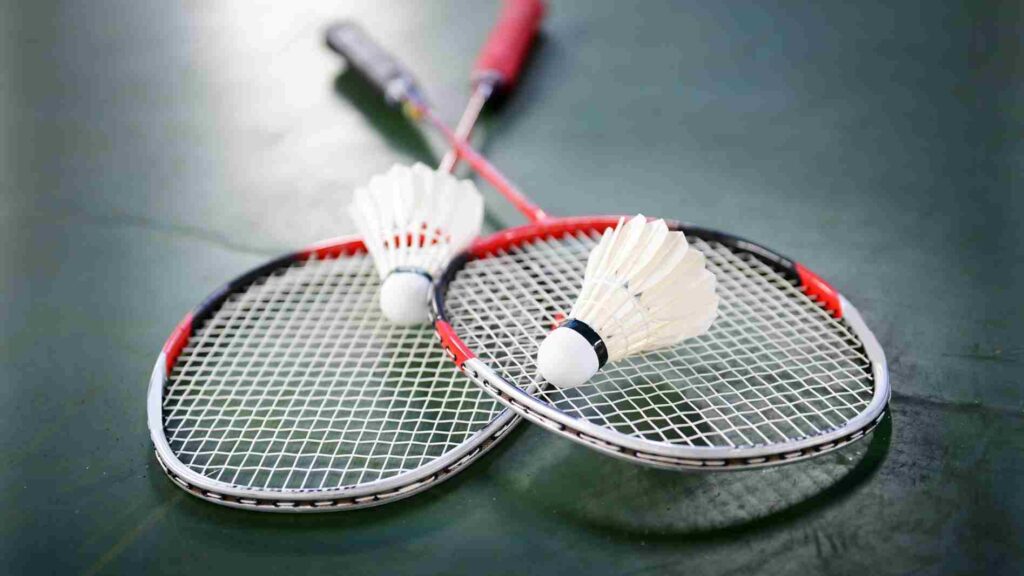
Players use a racket as a badminton paddle that is made of lightweight materials such as graphite, carbon fiber, or aluminum. The racket is typically around 27 inches long, and it has a round or oval-shaped head with strings stretched across it.
What’s the difference between a racquet and a paddle in pickleball vs badminton? As the name implies, a racquet consists of a handle, which is attached to an open hoop on which strings are stretched to form a network, whereas a paddle has a solid face, not strings, on which the strings are stretched.
It is typical for badminton racquets to consist of long frames and to categorize them based on the stiffness of the shaft or the weight of the head. Depending on the size, thickness, material, grip size, and many other factors, pickleball paddles differ in length, shape, weight, and more.
Balls and Shuttlecocks
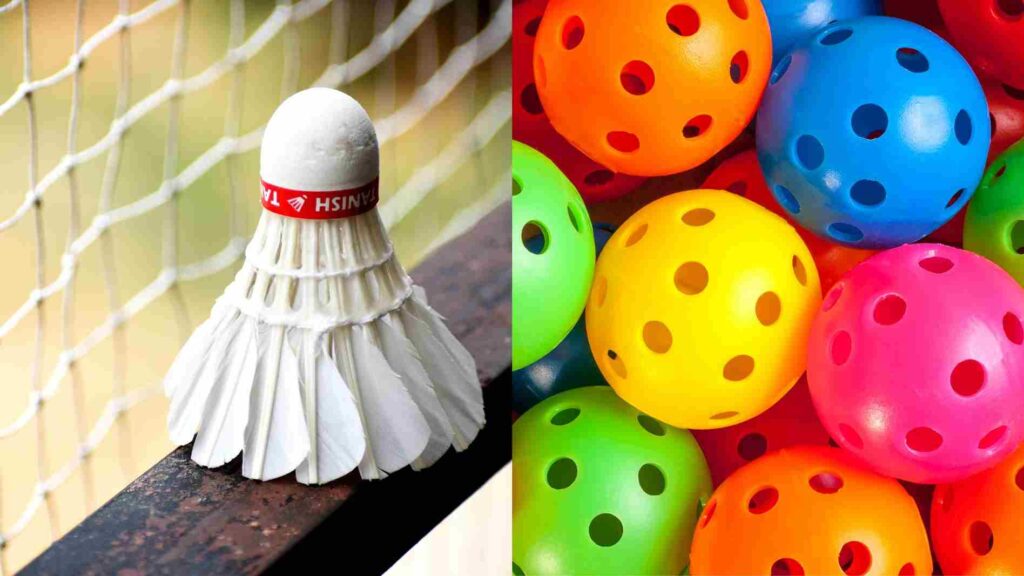
Pickleball uses a plastic ball and the size of a pickleball is similar to a wiffle ball. The ball has holes in it, which reduce the air resistance and make it easier to hit.
There are different types of size of pickleball made for different locations, with indoor balls being smoother than outdoor balls, as compared to pickleball vs badminton shuttlecocks.
Badminton uses a shuttlecock, which is a cone-shaped cork base with feathers attached to it. The feathers create the drag, which slows down the shuttlecock and makes it more challenging to hit.
It is almost exclusive for players in competitions to use shuttlecocks with goose feathers because the feathers provide smoother flight. During a single match, players often hit the shuttlecock hard, which means feather shuttlecocks frequently have to be replaced.
In formal competitions, plastic shuttlecocks are not used because they bounce more and are heavier than feathered ones.
Difference In Court Sizes
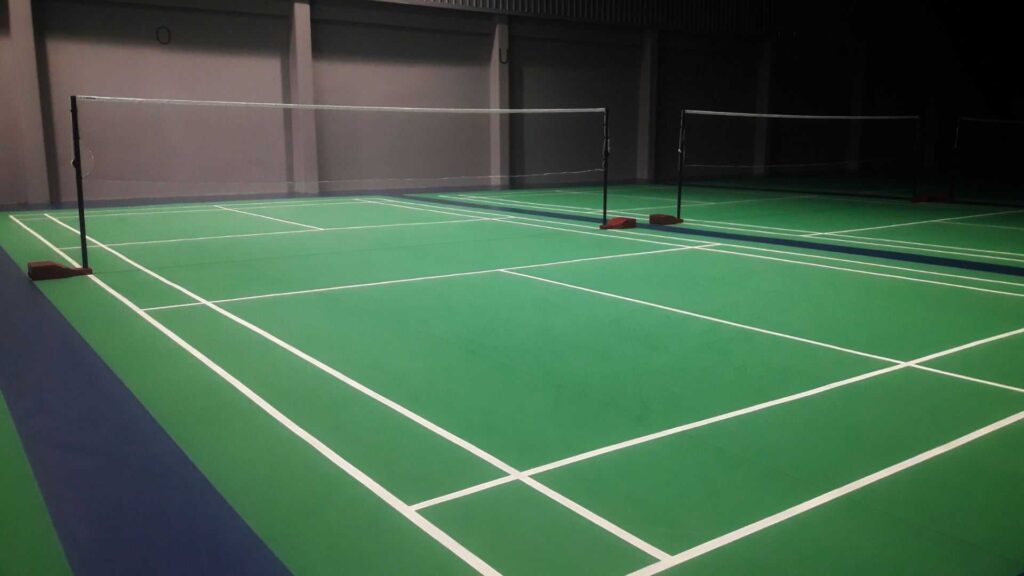
Pickleball uses a net that is 36 inches high on the sidelines and 34 inches high in the middle. The skinny singles pickleball court dimensions are 20 feet wide and 44 feet long, which is about the size of a badminton court.
However, the court is divided into different sections, such as the kitchen and the non-volley zone, which have specific rules for play.
Now, what’s badminton court size? The Badminton court uses a net that is 5 feet high in the center and 5 feet, 1 inch high at the edges. The badminton court dimensions are 20 feet wide and 44 feet long but in badminton singles, the lines are slightly more narrow than on a pickleball court.
It is also divided into different sections, such as the service court and the backcourt, which have specific rules for play, as compared to badminton vs pickleball court.
Badminton’s front serve line is 6.5 feet from the center net, while pickleball kitchen size or width completes 7 feet from the net.
Want to learn more about pickleball vs badminton court dimensions?
Difference In Rules
- Scoring System: In pickleball rules, a point is scored only by the serving team, and the game is played to 11 points, with a two-point margin required for victory. In badminton, either team can score a point, and the game is played to 21 points, with a two-point margin required for victory.
- Serving Rules: In pickleball serving, the server must serve underhand and keep at least one foot behind the baseline. The ball must land in the opponent’s service court diagonally across the net.
In badminton, the server must serve the shuttlecock from below the waist and must be standing in the service court. The shuttlecock must land in the opponent’s service court, and the server’s feet must not touch the court lines.
- Scoring Rotation: In pickleball, the serving team’s members rotate serving each time their team wins a point. In badminton, the serving team continues to serve until they lose a point.
- Fault Rules: In pickleball, a fault is called if the ball is hit out of bounds, if it fails to clear the net, if it touches the net on the serve, if it is volleyed from within the non-volley zone, or if a player steps into the non-volley zone while volleying the ball.
In ball badminton, a fault is called if the shuttlecock lands out of bounds, if it fails to clear the net, if it touches the net on the serve, if it is volleyed from within the front service area, or if a player steps into the opponent’s court.
Types Of Serves
The types of servers are also different in pickleball and badminton. In badminton, there are four different types of serves, which are determined by how players want their rally to flow.
| No. | Serve Type | Badminton Serves |
| 1. | Low Serve | Low serve is made by gently tapping the shuttle and aiming to just get it over the net. |
| 2. | High Serve | An aggressive serve that aims to reach the back of the opponent’s court by getting the shuttle up high. |
| 3. | Flick Serve | A flick serve involves swinging the racket around the body with the back of your hand, in order to get the shuttle upwards faster. |
| 4. | Drive Serve | This is a fast, flat offensive serve that travels to the mid-to-far end of the serving area. It usually gets the unprepared receiver a quick point. |
Every player’s play style can be customized with each of the three types of serves in pickleball.
| No. | Serve Type | Pickleball Serves |
| 1. | High Serve | Your opponent will receive this type of serve deep into their court. |
| 2. | Power Serve | Power serves are fast and low serves that force your opponent to react quickly, making it easier for them to make mistakes. |
| 3. | Smooth Serve | A softer serve that tries to get the player out of position so the rest of the court can be attacked |
Watch Video: Badminton vs Pickleball
Conclusion: Pickleball Vs Badminton
In conclusion, while both badminton vs pickleball is racquet sports with pickleball games similar to badminton and elements, they have notable differences in terms of court size, equipment, and techniques. Ultimately, the choice between pickleball and badminton the two sports depends on personal preference and the desired level of physical activity.





